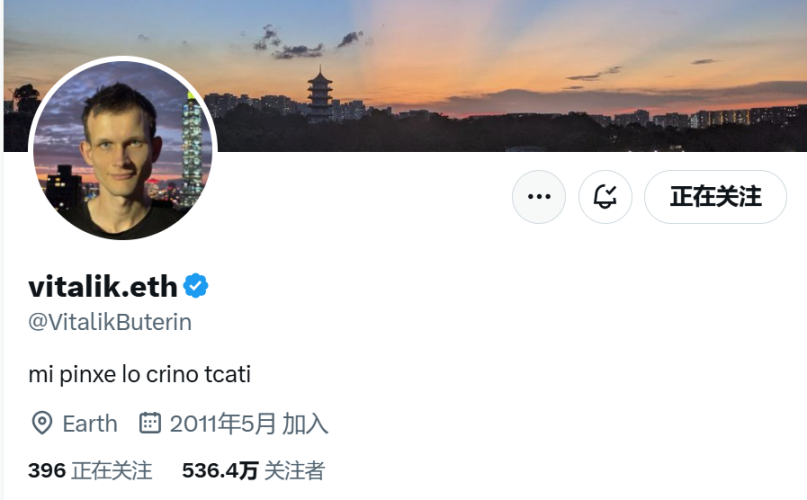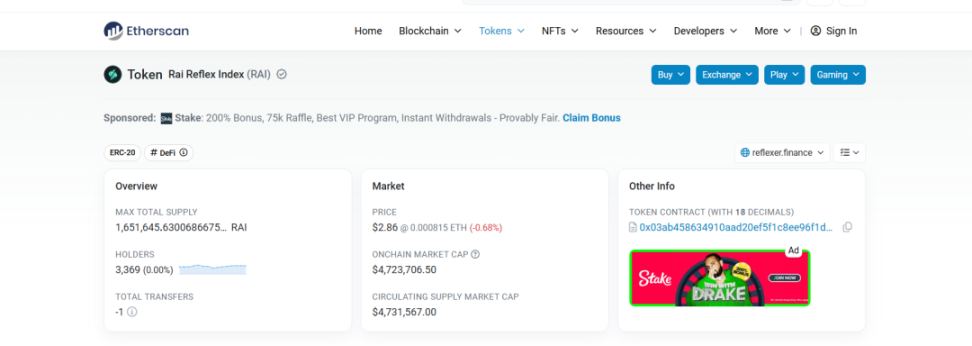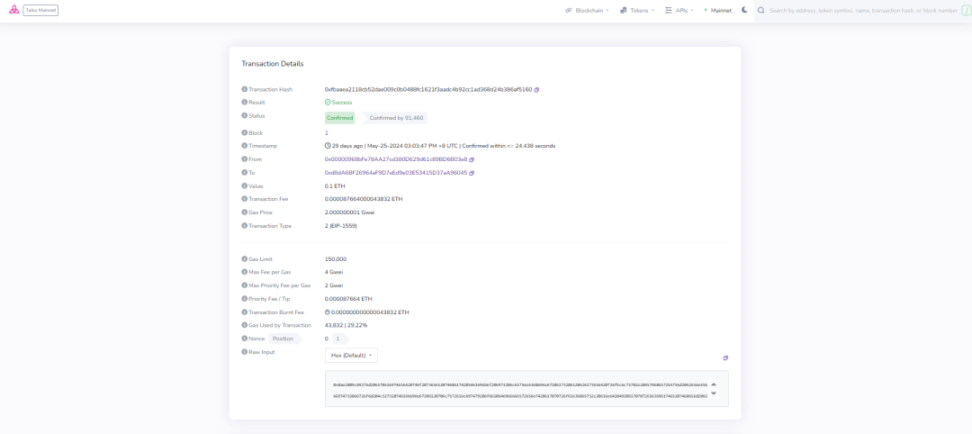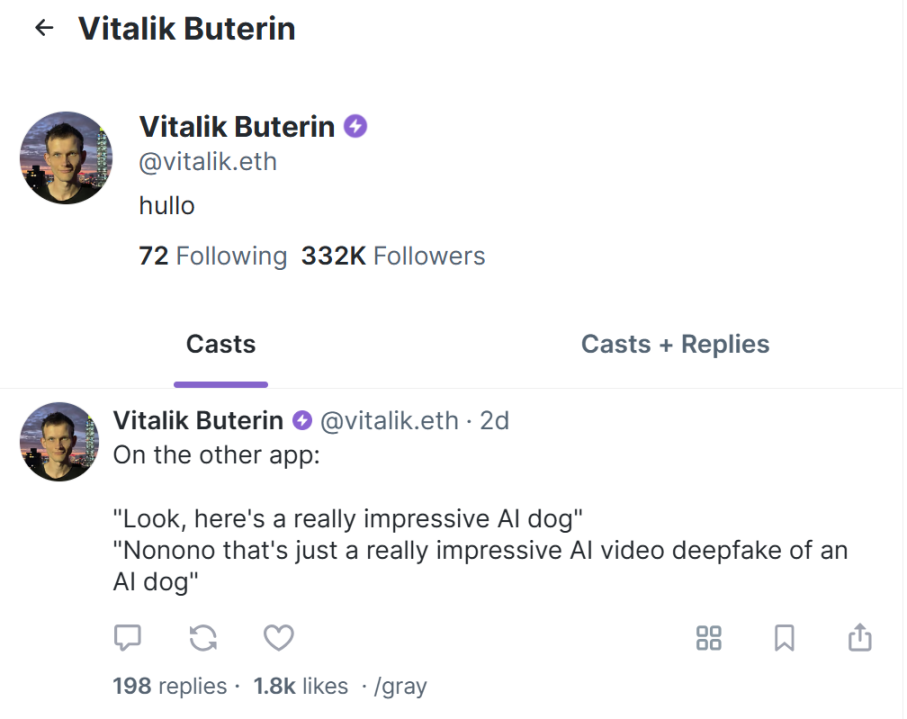En güçlü satıcı? Vitalik'in sıklıkla beğendiği projelerin ve parçaların listesi
Original author: Terry
As one of the areas where influence is monetized the fastest, for ordinary retail investors deep in the Web3 world, being able to pay attention to the product-selling tweets of various Alpha bloggers and KOLs in a timely manner has almost become an essential skill for tracking the code of wealth.
So who is the most influential sales promoter in todays crypto world?
The following KOL sales effect chart may not be rigorous, but it is accurate to put Vitalik Buterin in a unique position – as the absolute decision-maker of the Ethereum ecosystem, although Vitalik rarely directly sells goods, every open or hidden word and action will have a great driving effect on the market.
The recent surge in ENS due to Vitalik’s remarks is a typical example. Therefore, this article aims to review the development and current status of the projects/technical directions that Vitalik has promoted in history, and try to summarize the reasons behind them and how they have influenced and shaped the Ethereum we see today.

The obvious preference for ENS
It is no exaggeration to say that Vitalik favors ENS.
He once publicly stated in an interview: The Ethereum Domain Name Service ENS is the most successful non-financial Ethereum application to date.
As we all know, ENS, the full name of Ethereum Name Service , launched in 2017, is a distributed domain name service based on Ethereum. Through a unique bidding mechanism, any user can register one (or more) Ethereum domain names ending with .eth for their Ethereum address through a bidding process.
Simply put, ENS can map personal long and difficult-to-remember Ethereum addresses starting with 0x to custom short addresses, such as satoshi.eth, vitalik.eth, etc. In this way, in wallets that support ENS, users no longer have to copy and paste long addresses, and can directly use ENS domain names to bind various cryptocurrency addresses and receive cryptocurrency payments.
Vitalik’s Twitter account nickname has always been “vitalik.eth”, which is equivalent to a long-term free advertisement for ENS, and also indirectly shows his support for ENS.

Since the first half of this year, Vitalik has directly participated in the promotion of ENS on several occasions, which has had a strong and visible impact on the price trend of ENS in the secondary market:
First, on January 3, Vitalik forwarded ENSs layer 2 data resolution solution and posted that all L2s should run on the CCIP resolver so that we can register, update and read ENS subdomains directly on L2. ENS is very important and it needs to be affordable. Then ENS rose by more than 30% in 5 minutes, breaking through 12 USDT.
On May 21, Vitalik and ENS once again staged a rather dramatic support drama – the reason was that Vitalik, in his discussion with others about the sorter and intention, gave examples of his views on cross-L2 standards/infrastructure, emphasizing the three points of key changes in token transfers, ENS, and smart contract wallets (individuals and organizations):
We need an open decentralized protocol for quickly transferring assets from one L2 to another and integrating it into the default sending page of the wallet. Key changes to token transfers, ENS, and smart contract wallets are all easy to implement on L1, but difficult on L2. Light clients, basic reliability, and proof systems are also more secure/decentralized on L1, but far from enough on L2.
Overall, since January 3, ENS has risen from $8 to a high of $30, an increase of nearly 300%.
What else did Vitalik “shout”?
In addition to ENS, Vitalik has a long list of projects/technical directions that he has promoted in the past.
Plasma
The first is naturally Plasma. As Vitalik’s most respected Ethereum expansion solution, it is rarely mentioned nowadays, and even most new users have never heard of it.
In August 2017, Vitalik and Joseph Poon jointly released the original concept of Plasma – an off-chain expansion plan, which essentially removes data and calculations (except deposits, withdrawals and Merkle roots) from the Ethereum main chain and executes them off-chain. At the same time, some key operating status data is regularly stored on the main chain to ensure ultimate security with the help of the Ethereum main chain.
However, since Plasma cannot solve the data retention problem and is not conducive to migrating contract status to L1, it was eventually replaced by a new Ethereum expansion route represented by Rollup. Today, the numerous Rollups have almost become the only mainstream option for Ethereum expansion.
However, it is worth noting that since Rollup is extremely dependent on the data availability on the main chain, and Plasma completely bypasses the data availability problem and greatly reduces transaction fees, the popularity has begun to recover again. At the end of last year, Vitalik Buterin published articles such as Exit games for EVM validiums: the return of Plasma, regarding Plasma as a way to improve chain scalability using validity proofs such as zkSync and StarkNet.
This has also led to a re-examination of Plasma’s ability to minimize data availability limitations, and it is expected that Plasma may once again play an important role in improving the performance of the Ethereum network in the future.
RAI
In the field of stablecoins, Vitalik once wrote a special article to explain his views on the design of stablecoins, and believed that they can basically be divided into three different categories: centralized stablecoins, stablecoins backed by real-world assets governed by DAOs, and stablecoins backed by cryptocurrencies with minimized governance.
The first two are represented by USDT/USDC and DAI respectively, while for the third category, he specifically introduced the RAI model in detail, believing that RAI avoids all connections with non-cryptocurrency financial systems, making it more difficult to attack.
Later, when participating in public events, Vitalik also expressed his belief that the rise of RAI could solve the problem of Lido dominating the LSD ecosystem, and believed that RAIs radical governance may not need to go all the way. If the RAI community adopts more active governance to support staked ETH and intends to only accept non-dominant forms of staked ETH, that would be enough.

However, as of the time of writing, on-chain data shows that the total supply of RAI is only 1.65 million, and its share in stablecoins is almost negligible.
SIWE, POAP, SBT
In the Web3 world, how do you prove who you are?
Vitalik once wrote that ENS and other tools can help build an ecosystem around identity because blockchains are valuable for identity applications because they are independent of institutions. In addition to ENS, SIWE, POAP, and SBT are also considered by Vitalik as key components for building an on-chain identity system:
The Sign In With Ethereum (SIWE) standard allows Web3 users to log in to (traditional) websites based on their on-chain accounts;
POAP is used to issue tokens representing proofs;
Especially through the article Decentralized Society: Finding the Soul of Web3, Vitalik has made the soul-bound Token SBT gradually enter the vision of more people and gradually become the actual carrier of Web3 digital identity – SBT can further prove the results while also deducing on-chain traces and recording the participation process. At the same time, it has permanent and non-transferable token attributes, which lays the foundation for building a one-to-one complete Web3 identity system.
From this perspective, the core of Soul Binding Token SBT is actually to build a native Web3 identity system from scratch for each Web3 user in the Web3 world, so that based on this identity system, in addition to applications such as DeFi and NFT, Web3 can be more widely expanded to diversified new application scenarios.
However, as the Web3 social trend subsides, SBT is currently only used as a representative credential of decentralized identity and has not yet seen large-scale on-chain adoption.
DVT
On December 28, 2023, Vitalik published an article discussing how to handle the huge number of signature loads in the Ethereum network without sacrificing decentralization. The corresponding solution was mentioned, which is to use DVT (distributed validator technology) to build a decentralized staking pool.
Since DVT allows multiple nodes to act as an Ethereum PoS validator, it can significantly improve security and decentralization. In November 2023, Lido actually began trialing the DVT solution to realize the so-called distributed validator network – powered by Obol Network and SSV Network.
Loopring/Taiko
As one of the early representative projects of the Rollup solution, Vitalik has publicly praised Looprings solution many times. For example, he recognized the Loopring protocol in discussions related to transaction performance, saying that combined with Sharding, the horizontal expansion solution divides the Ethereum network into thousands of islands, and the networks transaction performance can theoretically reach 160,000 transactions per second.
Taiko, which has a close relationship with Loopring and has just been launched on the mainnet, was also recognized by Vitalik not long ago. On May 25, Vitalik Buterin promoted the first block on the Taiko mainnet as a block proposer, and added a comment to the block:
Im excited to see that Taiko is launching as a based rollup. Ethereum benefits from L2s taking a plurality of different approaches, and I appreciate them being among the first to go in this direction.

Farcaster
In September 2023, Vitaliks X account was hacked and released a phishing link for free ConsenSys Proto Danksharding commemorative NFT, causing users to lose more than US$690,000.
Later, Vitalik stated on the decentralized social media Farcaster that his Twitter account had indeed been attacked by SIM card hijacking, probably because his mobile phone number was exposed when registering Twitter Blue. He also said that he had uninstalled Twitter and joined Farcaster, which can control account recovery through Ethereum address.
As of the time of writing, Vitalik has indeed made Farcaster his main social media platform – he has posted more than 10 posts on Farcaster in the past week, but none on X, and the latest one is a reply to an old post on June 11.

The secret battle for Ethereums legitimacy behind the live streaming
Back to the core issue, as a super public figure whose every word and action has a significant influence on the broader Ethereum ecosystem and even the entire Web3 world, what kind of considerations are behind Vitaliks public promotion of products?
The reason is simple. It is largely for the purpose of maintaining the orthodoxy of Ethereum, or ensuring that the development of Ethereum does not go off track or stall, and is committed to charting an ideal future – Ethereums further decentralization and the realization of the blueprint of Mass Adoption.
Just from the ENS, Plasma, and Taiko mentioned above, we can clearly see a main line to maintain the orthodoxy of Ethereum DA:
First of all, the ENS L2 data parsing solution that Vitaik actively advocated requires that the ENS services extended to various L2 networks must adopt the orthodox Ethereum DA, that is, the DA must be placed on the Ethereum mainnet, thereby excluding L2s that choose third-party DA platforms such as Celestia.
Since ENS is a key component in building the Ethereum identity system, when the pan-Ethereum ecosystem realizes the influx of Mass Adoption traffic in the future, it will be a non-financial application and infrastructure that L2 cannot ignore.
Establishing the standard in advance that if L2 wants to deploy ENS, it must put DA on the Ethereum mainnet further increases the opportunity cost of L2 choosing a third-party DA, and it has to carefully consider whose overall cost is higher.
The intention of Plasma is undoubtedly more obvious – in the context of the DA war, it completely avoids the problem of data availability and can greatly reduce transaction fees, especially by combining Plasma with ZK zero-knowledge proof, which just proves the validity of Plasma blocks on the main chain and reduces reliance on the exit mechanism.
Finally, as the first landing project of Based Rollup, Taiko’s core highlight is to achieve Rollup expansion through L1 sorting – entrusting the sorting power (and derived sorting, MEV and other income) to L1, that is, all sorting and security are provided by Ethereum L1, thereby further enhancing the economic attractiveness and competitiveness of the Ethereum mainnet.
Behind all public actions, there are legitimate or illegitimate (private or public) interests. Ethereum and Vitalik are no exception. As early as the third-party DA debate sparked by Celestia, it can be seen that Vitalik is very experienced in struggle.
There is an interesting analogy in the article On the Impact of Vitalik and Various Roadmaps on Ethereum Governance Process, that is, Vitalik actually plays a substantive CTO role in the Ethereum ecosystem to control the giant ship of Ethereum from deviating from the track:
Responsible for guiding the development process of Ethereum to be consistent with the planning direction of each roadmap, and even has the final say on whether the development direction is in line with the vision of Ethereum (regardless of whether he is willing to be so dictatorial).
From this perspective, no matter how people usually make fun of the difference between Vitalik and Satoshi Nakamoto as the top two cryptocurrency/eco-founders, at least Vitalik is a very qualified project founder – he strives to maintain the orthodoxy of Ethereum, and always firmly controls the giant ship of Ethereum to move in the direction he (and some key figures) believe is appropriate, and does not derail or stall in the competition among public chains.
özet
Vitalik is a human being, not a god. As long as you look at it from this perspective, you can clearly see the answers behind all the problems.
For ordinary users like us, it is enough to just remember that Vitalik’s various researches on Ethereum often contain the possibility of leading new hot spots, and be able to keenly smell the main battlefield of future financial struggles that may be hidden therein.
This article is sourced from the internet: The strongest salesman? A list of projects and tracks that Vitalik often likes
Original author: Weilin, PANews It has been one and a half months since the six virtual asset ETFs in Hong Kong were listed on April 30, and the market is still in the running-in period. On the one hand, traditional banks have not yet distributed these virtual asset ETFs, but on the other hand, some brokerages are actively promoting the layout. For example, Victory Securities VictoryX trading app has now opened the deposit and withdrawal functions of USDT and USDC to professional investors. Specifically in terms of market trading volume performance, data from SoSo Value shows that during this period, the average daily total transaction volume of the Hong Kong BTC spot ETF was US$4.3215 million, reaching a historical high of US$11.4984 million on June 11; the average daily total…







